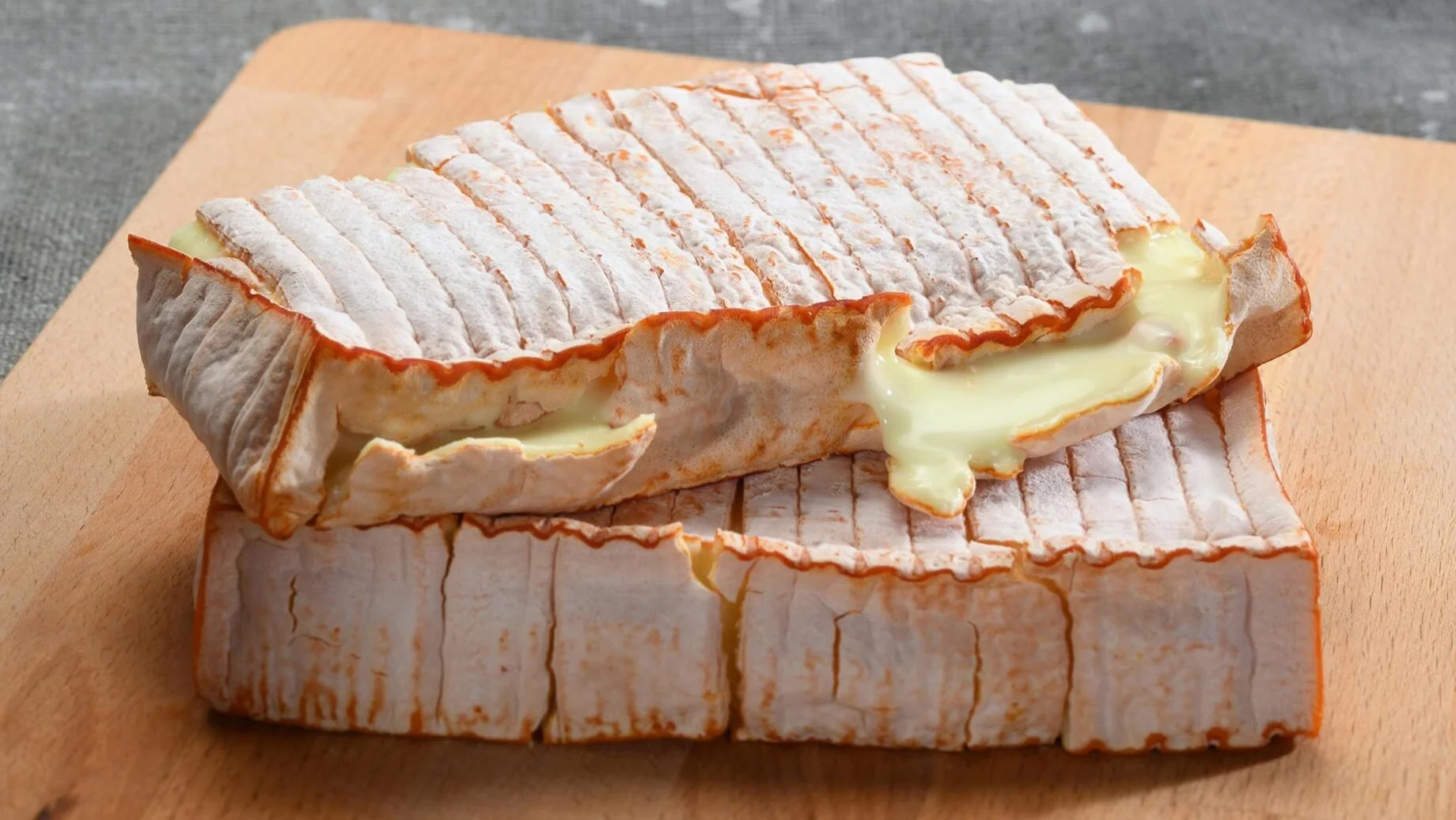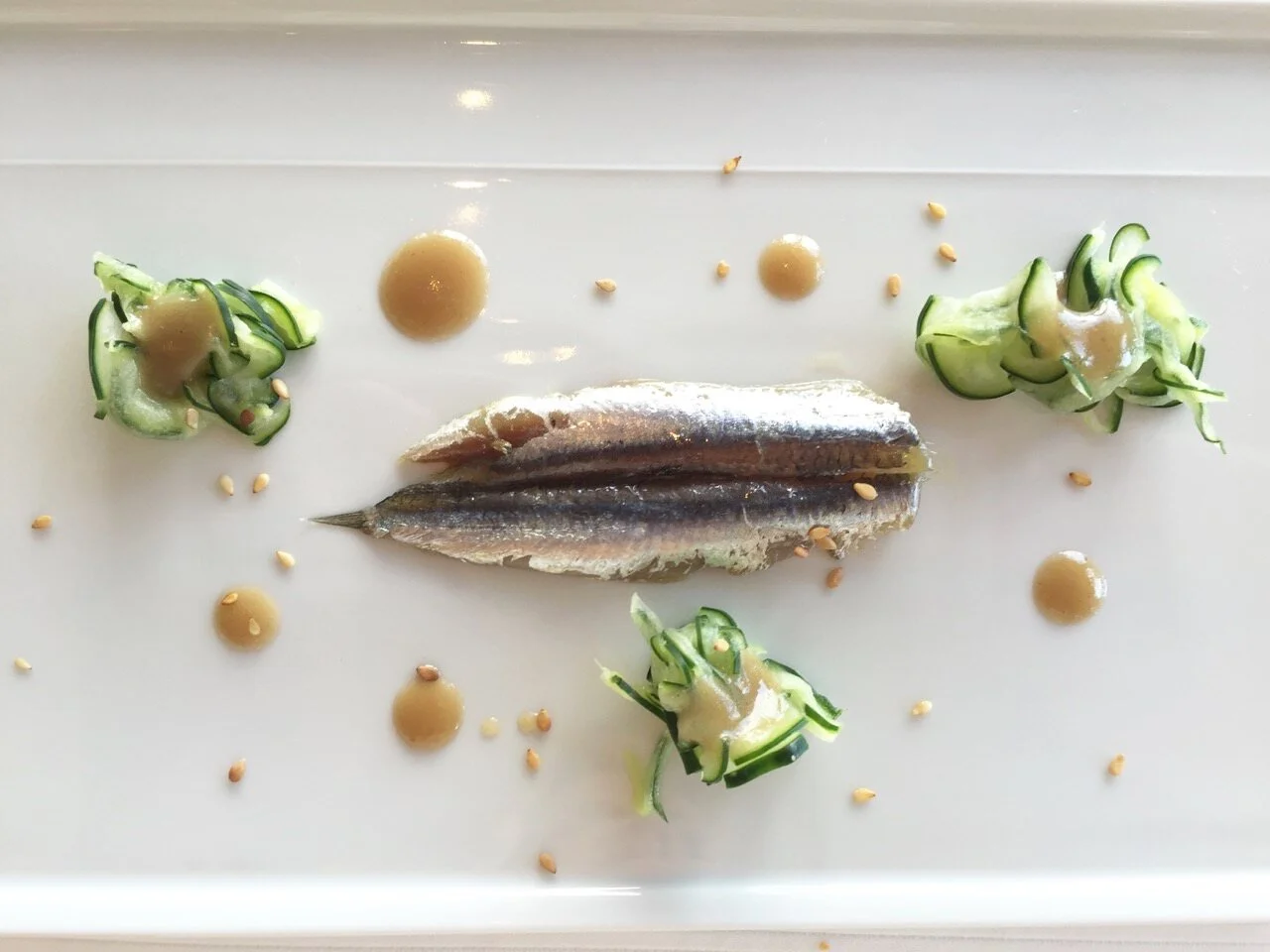World Cheese Encyclopaedia - Each Sunday learn all about a cheese in season.
This week Fromage Laguiole AOC-AOP from France.
Country: France
Region: L’Aubrac Massif Central
Made from: Cow's Milk 45% MG
Pasteurised: No
Texture: semi-hard
Aging time: 8 – 9 months
Certification :French AOC 1961
Le Laguiole (rhymes with "trial" and accented on the last syllable: "lah-YULL") is a pressed, uncooked cheese made only from raw whole milk from French Aubrac or Simmental cows. It comes from Aubrac, a basalt plateau 800 to 1,400 m above sea level. The cows feed on grass. Silage is prohibited. Pasturing is compulsory day and night at least four months a year. Annual milk production per cow is limited to 6,000 litres and the distribution of concentrates restricted to 6 kg per cow per day. Aubrac's vegetation is very varied and fragrant, contributing to the milk's richness and to Laguiole's flavour.
Laguiole cheese comes in big 20–50 kg cylinders 30–40 cm in diameter with a height/diameter ratio of 0.8:1. Its thick, dry rind ranges in colour from whitish to light grey, turning amber brown the longer it ages. The cheese ranges in colour from ivory to straw yellow; is firm, not hard; and has a velvety texture, melting in your mouth.
History
Laguiole is said to have been invented at a monastery in the mountains of Aubrac in the 19th century. According to historical accounts, the monks passed down the recipe for making this cheese from cattle during the alpages to the local buronniers, the owners of burons, or mountain huts.
Pliny the Elder tells us that the production of what later became known as Laguiole cheese dates back to High Antiquity. Fourth-century texts, in particular by Gregory of Tours, attest to the production on the Aubrac Plateau of fourmes, which Laguiole was still being called in the early 20th century.
Monks on the plateau developed and codified the production of the cheese that became Laguiole.They cleared land yielded lush pastures, irresistible to the cows and perfect for producing the best milk—and, therefore, the finest cheese.
Living conditions on the plateau influenced the production process, helping to make Laguiole a cheese that keeps well. The cows spend just four-and-a-months in the highlands (from 25 May, Saint Urban's Day, to 13 October, Saint Géraud's Day). During that time it was necessary to make a cheese that would last so that people, including pilgrims on their way to Santiago de Compostela, could nourish themselves with a quality product year round.
By the late 14th-century Aubrac had become the hub of a huge milk, cheese and beef production area.
How to enjoy it
Laguiole is often enjoyed at the end of a meal. It tastes even better with a local red wine, such as the well-structured AOC Marcillac, aromatic and velvety VDQS Entraygues le Fel and smooth, fruity Estaing.
But it is also delightful with before-dinner drinks or in mixed salads. It is also highly sought-after for cooking.
Foodies and gourmets will love various recipes using Laguiole, including soufflés, gougères, potato pancakes and veal with Laguiole. But the most famous dish is Aubrac aligot, which uses not Laguiole but an intermediate stage in its production, fresh tome
Recipe
Cheese Soup
Ingredients for 6 people
600 g of AOP Laguiole cheese
1 loaf of country bread with plenty of crust
3 sliced onions
2 litres of water or stock
Preparation
Brown the sliced onions in butter or goose fat.
When golden brown add stock and simmer a few minutes.
Layer slices of Laguiole AOP and bread in a tureen.
Repeat several times and top with a layer of Laguiole.
Add salt and pepper before adding the stock to the tureen.
Top with a little bit of grated Laguiole.
Bake 30 minutes to brown.
The soup should be thick: a spoon must stand up straight in the bowl!
Personalise your soup by replacing some of the stock with a glass of white wine.
Source: Le syndicat du fromage de Laguiole
Follow True Foodies























